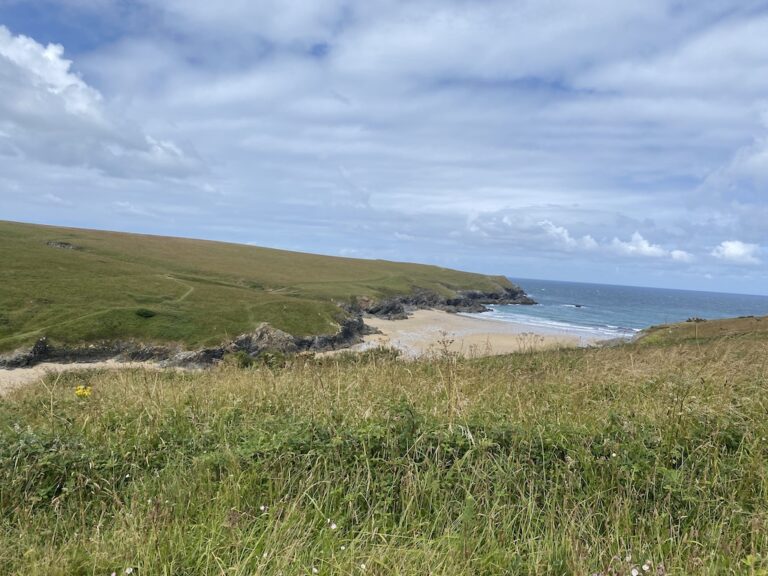The complete guide to visiting Kynance Cove, Cornwall
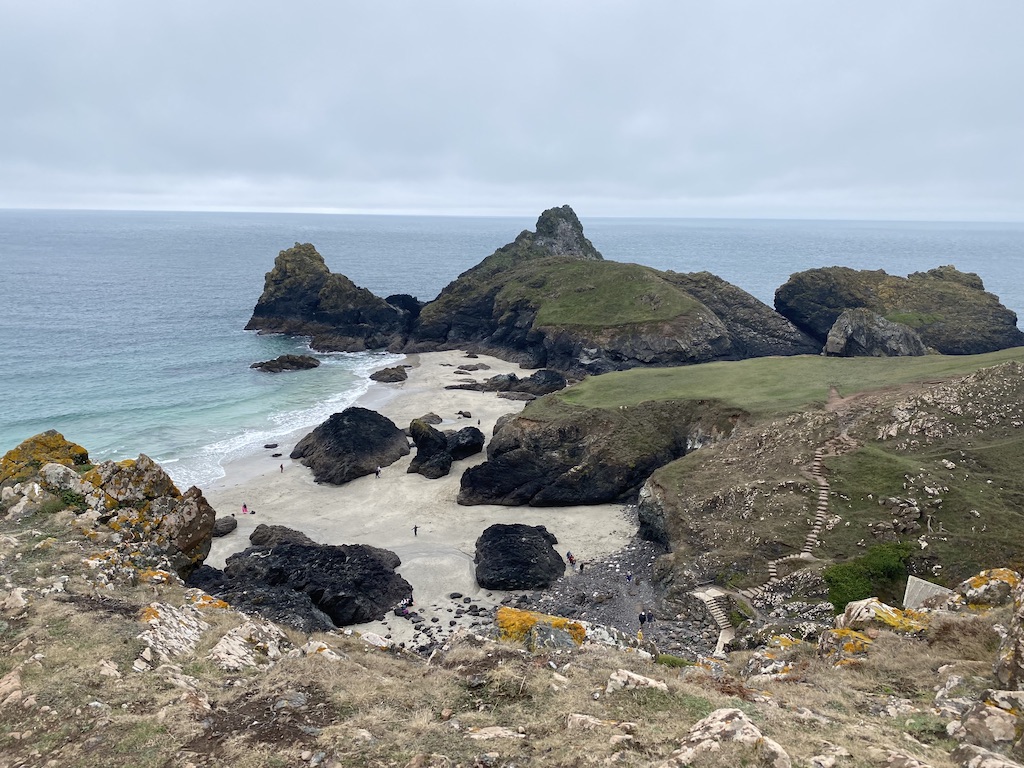
On the Lizard Peninsula in the south-west of Cornwall, you’ll find Kynance Cove. This little cove is a much loved destination for many vacationers, and for good reason: with its rugged vistas and rock formations, it transports you almost to a different land far away from normal reality.
I adore Kynance Cove. It’s always been a favourite destination amongst my family and we often visit on our trips to Cornwall.
Therefore, I’ve made this guide to give you more information about this magical place and how to visit for yourself.
About Kynance Cove
Kynance Cove is a well-known National Trust cove on the Lizard Peninsula, only 2.5 km from the Lizard, Britain’s most southerly point.
This cove is almost iconic, with rock plinths rising out from the beach and a whole host of caves to explore. A steep descent down the valley through heather and shrubland leads to the cove, providing gorgeous views and utter separation from normal life.
As you walk down, you’ll first see rock plinths rising out from the beach or perched over the sea, depending on when you visit. The views from the cliffside are stunning! In particular you can see Asparagus Island, the biggest island towards the west of the cove. You’ll then have opportunity to walk on the shingle and sand within the cove.
Time to explore
Kynance Cove is the perfect place to explore. The rock formations and meandering cliff line cut off different sections of the beach, making it feel a lot more private than other areas. You can sit in a secluded corner of the cove and feel separated from many of the people on the beach, in a good way. Standing by the rocks, hearing the barnacles clicking and the waves lapping up at the sand, it’s easy to be overcome by the feeling of peace.
When the tide is out, because of the many rock formations and cliff areas, you can spend hours exploring, discovering new caves and shingle areas which are otherwise cut off by the tide.
When the tide is in, there’s a whole lot less to explore and you won’t get very far. Instead, the volcanic rock appears to be springing out of the ocean, with waves beating off their sides. It’s still very pretty but isn’t quite the same.
I’d suggest making sure you check the tide times before you arrive or go exploring. At high tide, the cove is mostly covered, so exploration will be limited. You also don’t want to set out to explore the whole place and discover you’re cut off by the tide!
Heading to Cornwall’s north coast? Check out my guide on how to visit Holywell Bay (my favourite beach in Cornwall!)
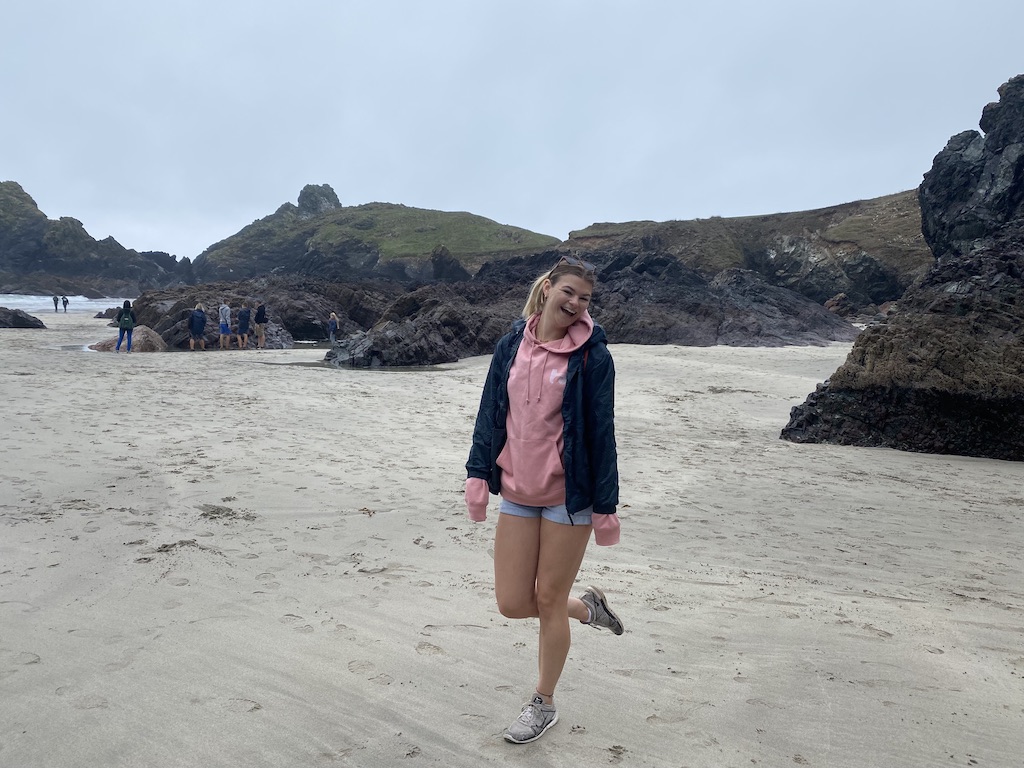
Exploring the stacks
For geology enthusiasts, the area around the Lizard is special, and Kynance Cove is no exception.
At Kynance Cove, have a look at the stacks closely when you’re walking around. Can you see shiny red and green rocks? This is serpentinite, an unusual mineral which tells an important part in Britain’s history. It tells us that the rocks at the Lizard were once beneath an ocean and have since been pushed up during a collision.
The Geological Society’s article on the geology of Kynance Cove is a great resource to help you uncover these rocks!
A popular place
Given how far it is away from the nearest towns and cities, you’d think you’d have this place to yourself.
Unfortunately not. The National Trust website highlights that in peak season (July and August) the car park is often full by 11 am!
However, when I’ve visited outside the school holidays, visitor numbers have been low enough that I didn’t feel like I was sharing it with too many people. Don’t get me wrong, this is firmly on the beaten track, but there is still enough space for everyone to be comfortable.
Besides, when the tide is out, there’s enough nooks and crannies to explore that you can get away from everyone else, with a sense of seclusion even when the beach is quite busy.
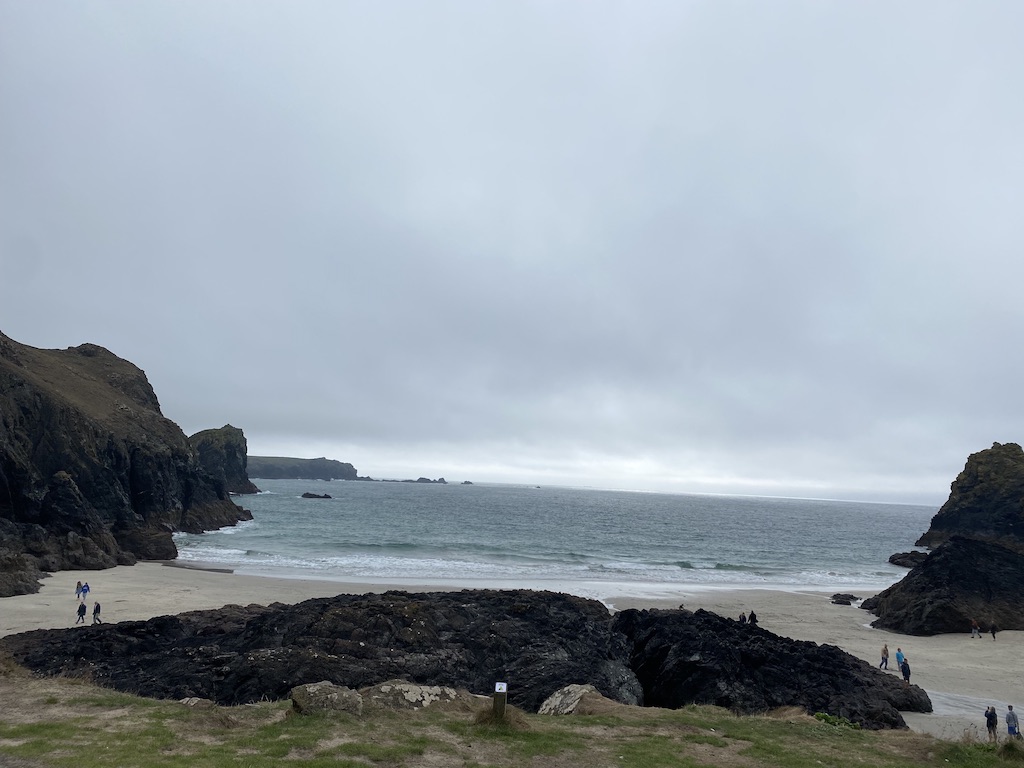
How does Kynance Cove rate as a destination?
As part of this blog, I give every place I visit a rating so that you can easily compare destinations and decide whether they’re worth a visit. Those are the scores you see at the top of the page!
This is how Kynance Cove rated:
- Accessibility: 2/5 – the walk down to Kynance Cove is generally steep. There is an easier tarmac route used for cars to get down for the cafe which is better for people with mobility issues or with pushchairs. Given Kynance Cove’s remoteness, it’s also quite difficult to get to.
- Safety: 4/5 – Kynance Cove feels safe. There’s just a risk of being cut off by the tide.
- Enjoyment: 5/5 – Kynance Cove is one of the most beautiful spots in Cornwall and even in all of the UK. It’s hard not to enjoy yourself here!
- Value: 5/5 – if you are a National Trust member, parking is free. There are minimal other facilities to compare it to!
Overall score: 4/5
If you’ve already visited, let me know if you agree with these ratings! Just to note, the ratings are my personal opinion based on my visit, so you might have a completely different experience.
Want more information on the ratings? Check out my post on how I rank destinations
How to get there
Kynance Cove is pretty much impossible to reach without a car. Its location, far away from nearby settlements, means that public transport links are limited in this area.
The National Trust operates a car park in the cliffs above Kynance Cove. From there, it’s around a 10-20 minute walk down to the cove itself. You’ll find toilets by the cafe near the beach and in the car park.
It’s also possible to visit Kynance Cove using the South West Coast Path. Kynance Cove is around 2 miles’ walk from the Lizard Point, which makes for a pretty walk. It’s also possible to walk from Mullion (4 miles).
One final option is to take the bus. The 37 bus from Redruth to the Lizard is your best bet, but as stops are on the main road, quite a way from Kynance Cove, you’re in for a walk to reach the beach!

The route to the beach
There are two routes down. The first (the most popular) is a shingle pathway, to the left when you exit the car park, which forms part of the South West Coast Path. This involves some steep steps and uneven land, so wear decent footwear (keep your flip flops in the bag for now!).
Also, you’ll need to descend onto the beach using a set of steps, the bottom of which is covered at high tide, so only attempt this route during low tide. If not, you’ll have to turn back!
The second route is a tarmac road, located to the right as you exit the car park. As it’s used as a supply route to provide vehicular access to the cove, this is level and smooth. However, it’s a bit longer than the first and not as pretty, which is why I’ve always preferred the first option. We found taking the road to be easiest when going up the hill!
The tarmac road is also the best option if you’re visiting with pushchairs or wheelchairs as the route is mostly level. However, as the road is sloping and the beach itself is accessed by passing over shingle, I would suggest leaving the pushchair in the car if you’re able to.
If you’re wanting to visit a quieter beach, check out Polly Joke (a stunning cove on Cornwall’s north coast!)
Where to stay
Kynance Cove is isolated from pretty much everything. Therefore, it’s best as a day trip from elsewhere in Cornwall.
There’s a range of camping and caravan sites on the Lizard Peninsula, with the odd hotel dotted about. Just pick what suits your travel style!
It’s also worth noting that Kynance Cove Cafe have a holiday cottage on-site which can be rented throughout the year.
Heading a bit further afield, several larger towns would make good bases for your trip, with a range of hotels and holiday lets available. Consider Falmouth, a 45 minute drive away, or Penzance, 50 minutes away.
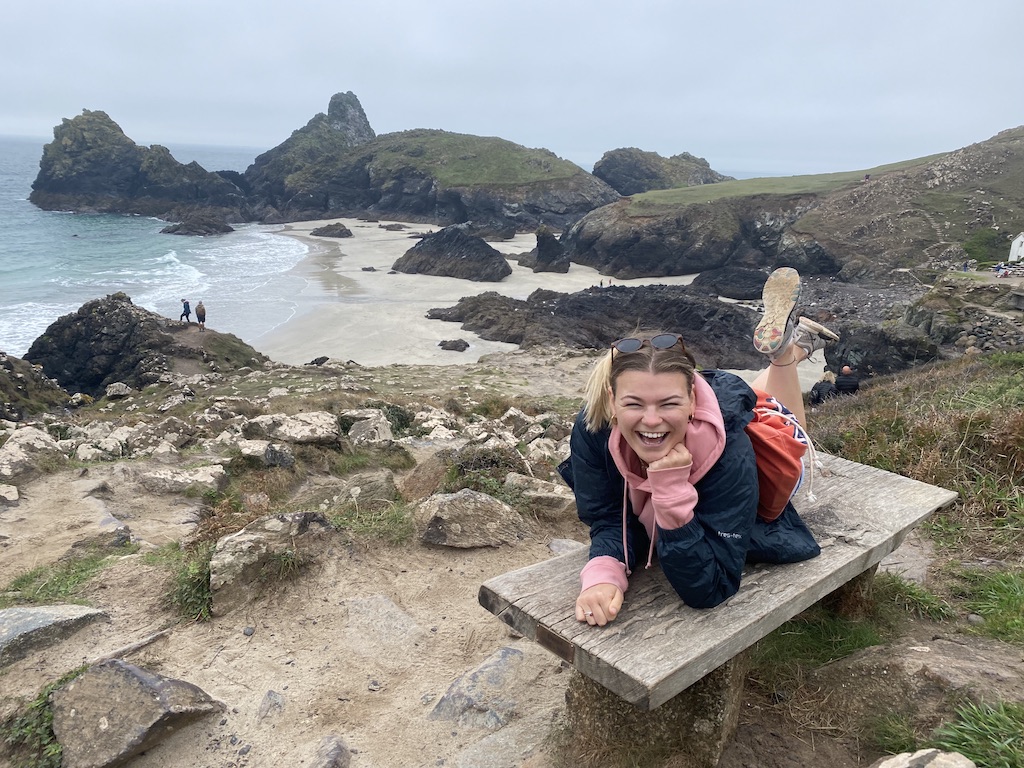
Where to eat
Kynance Cove’s isolation means that options for food are also quite limited.
A cafe is located next to Kynance Cove, with stunning views over the beach. They sell a range of hot drinks, cakes and sandwiches, and we found it to be reasonably priced. Bear in mind there is only outdoor seating, so you won’t be able to shelter from the rain should you visit during a downpour.
Your only other option is to bring food with you. You can fetch essential items from one of the supermarkets in Helston on your way into the Lizard Peninsula.
What to do at Kynance Cove
The beauty of Kynance Cove is that there isn’t much to do here. It’s a place to unwrap, unwind and explore, away from daily stresses and normal problems.
Still, some possible options include:
- Sit down and admire the view. At the top of the cliffs (on the walk down), or along the south-west coast path, there are gorgeous views of the cove and the ocean beyond. You could bring a picnic blanket and watch the tide come in!
- Explore the south-west coast path. This is a rugged coastline, perfect for viewing from above. The path connects to the Lizard Point, so it may make a nice walk down, although this isn’t something I’ve done before so can’t vouch for.
- Take a dip in the ocean. The water at Kynance Cove, in my opinion, looks very cold and frothy. However, it’s common to see swimmers heading for a shallow dip, with the waters a bit calmer than other Cornish beaches. Just to note, there are no lifeguards here.
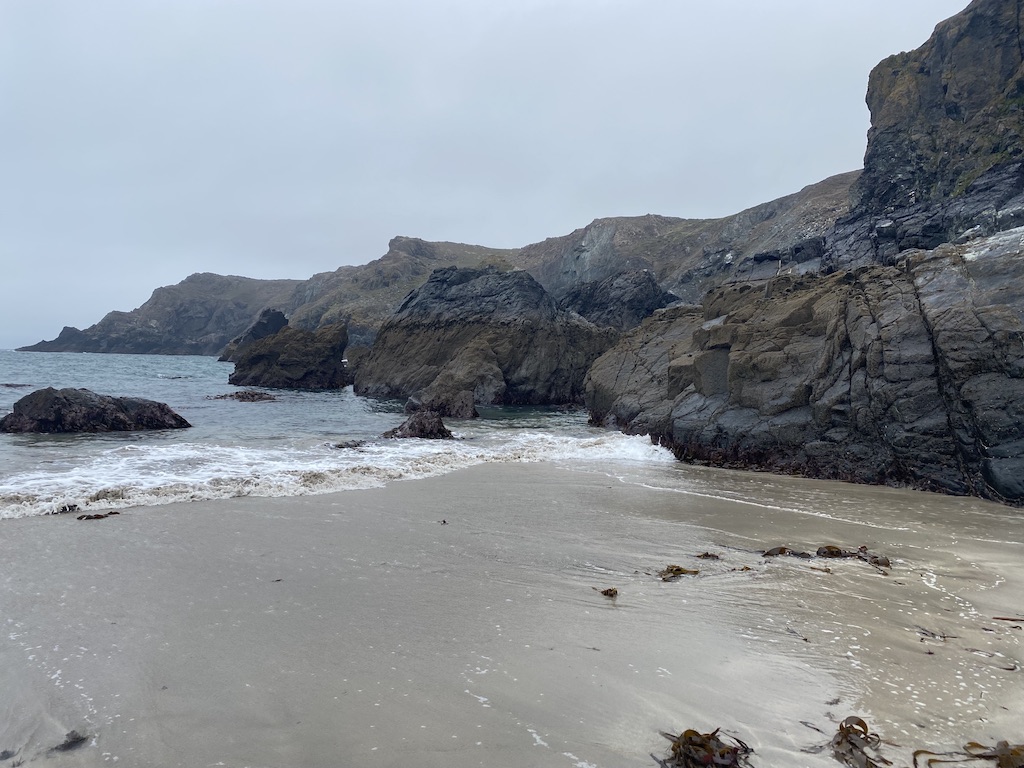
Conclusion
Kynance Cove might just be one of the most beautiful beaches in Cornwall, if not the UK. It’s no surprise it’s so popular!
What more would you like to know about Kynance Cove? Let me know in the comments!
More information
- The National Trust page for Kynance Cove gives you practical information for visiting.
- Aspects Holidays have a super informative guide on visiting Kynance Cove.
- The Third Eye Traveller has a great article on how to visit Kynance Cove.





